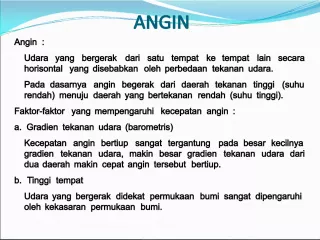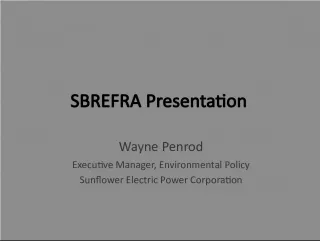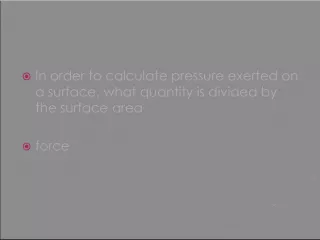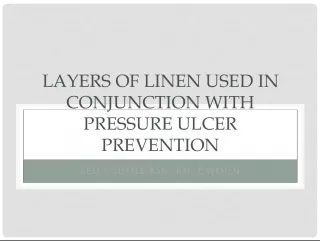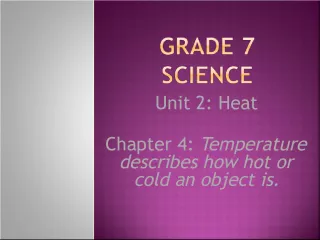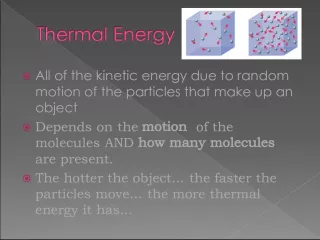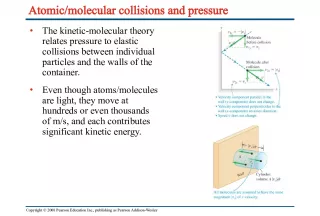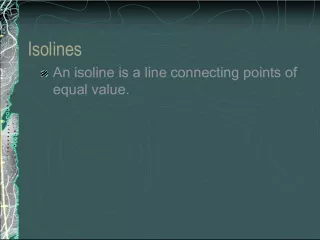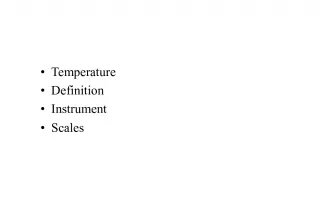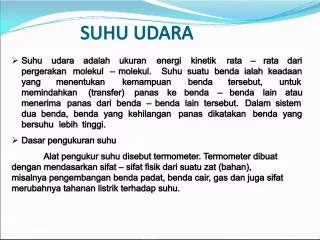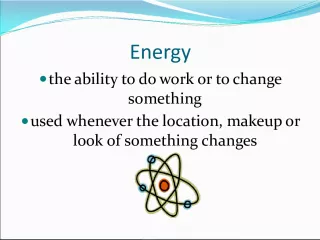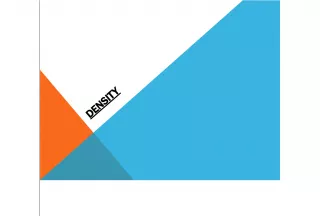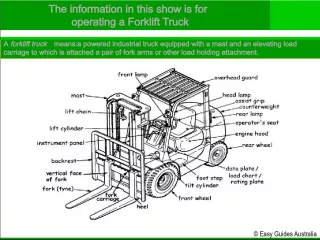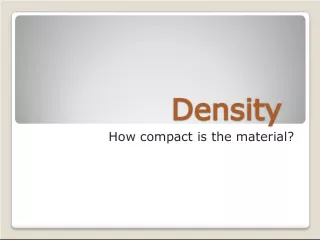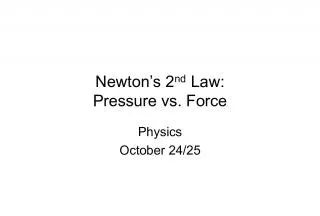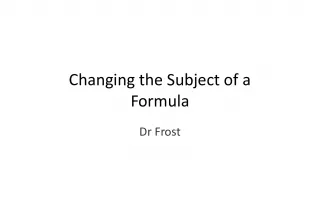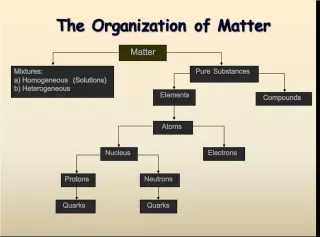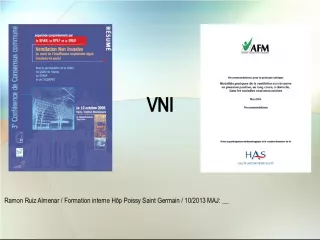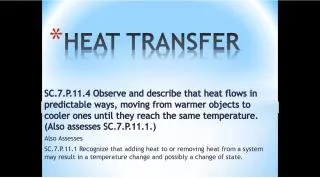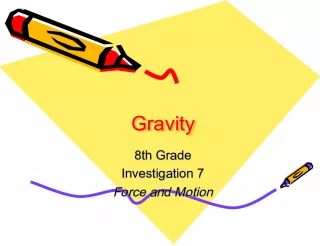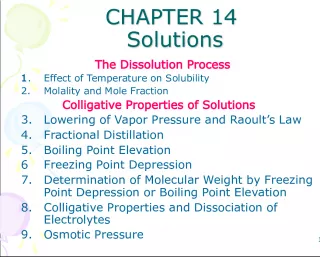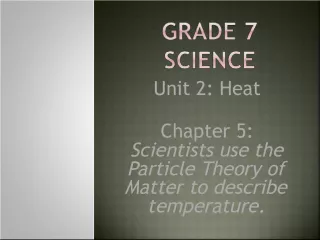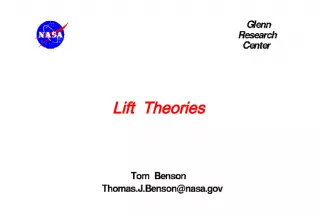Understanding Gases: Temperature, Intermolecular Attraction, and Pressure
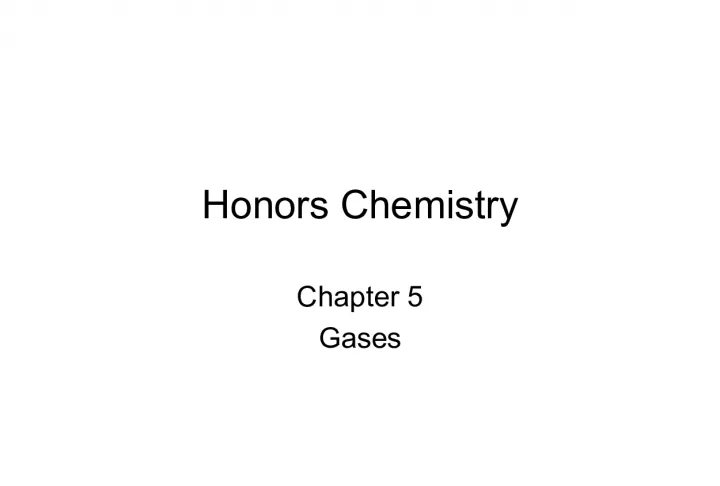

In this chapter of Honors Chemistry, students will delve into the world of gases and explore the relationship between temperature and intermolecular attraction. Atomic gases,
- Uploaded on | 2 Views
-
 rydertaylor
rydertaylor
About Understanding Gases: Temperature, Intermolecular Attraction, and Pressure
PowerPoint presentation about 'Understanding Gases: Temperature, Intermolecular Attraction, and Pressure'. This presentation describes the topic on In this chapter of Honors Chemistry, students will delve into the world of gases and explore the relationship between temperature and intermolecular attraction. Atomic gases,. The key topics included in this slideshow are . Download this presentation absolutely free.
Presentation Transcript
Slide1Honors ChemistryChapter 5 Gases
Slide25.1 Gases• Temperature vs. Intermolecular attraction • Atomic Gases • Noble Gases, H 2 , N 2 , O 2 , F 2 , Cl 2 • Molecular Gases • Usually light molecules with weak attraction forces • Eg: HCl, CO 2 , NH 3 , H 2 S, NO 2 • Ionic Compounds • Strong forces; not normally gases
Slide35.2 Pressure• Force per unit area • P = F/A • N/m 2 unit defined as Pascal (Pa) • Standard air pressure = 101.325 kPa • Also called 1 atmosphere (atm) • Measured by unequal mercury levels • Manometers and barometers • Common unit called mmHg (or Torr) • Standard air pressure = 760 mmHg
Slide45.2 Dimensional Analysis• Convert 75.0 kPa to mmHg • 75.0 kPa 760 mmHg ----------- x --------------- = 563 mmHg 1 101.325 kPa • Try this one • Convert 1.25 atm to kPa
Slide55.3 Boyle’s Law• Pressure is inversely proportional to volume • Hold temperature and amount of gas constant • V 1/P • V = k x (1/P) • PV = k • Best used with changing conditions • P 1 V 1 = P 2 V 2
Slide65.3 Boyle’s Law Problems• A 175 mL sample of methane is stored at 125 kPa. What pressure is needed to compress the gas to a volume of 50.0 mL? • P 1 V 1 = P 2 V 2 • (125 kPa) (175 mL) = P 2 (50.0 mL) • P 2 = 438 kPa • Try this one • A sample of argon occupies 476 mL at 650 Torr. Find the volume at 975 Torr.
Slide75.3 Charles’ Law• Also credited to Gay-Lussac • Volume is directly proportional to temperature • Hold pressure and amount of gas constant • V T • V = kT • Linear relationship • Must use Kelvins! • V 1 V 2 --- = --- T 1 T 2
Slide85.3 Charles’ Law Problems• A 5.00 L helium balloon is heated from 20 o C to 75 o C. Find its new volume. • V 1 /T 1 = V 2 /T 2 • 5.00 L V 2 --------- = -------- 293 K 348 K • V 2 = 5.94 L • Try this one • A 670 mL sample of chlorine is stored at 50 o C. At what temperature will its volume be 450 mL?
Slide95.3 More Gas Laws• Another form of Charles’ Law • Pressure is directly proportional to temperature • P = kT • P 1 /T 1 = P 2 /T 2 • Avogadro’s Law • Volume is directly proportional to the amount of gas present • V n • Volume relationships in chemical reactions
Slide105.3 Avogadro’s Law Problems• How many liters of hydrogen are needed to completely react with 1 liter of oxygen? • 2 H 2 + O 2 2 H 2 O • 2 mol hydrogen react with 1 mol oxygen • V n, so…. • 2 L hydrogen react with 1 L oxygen • Try this one • How many liters of ammonia are formed when 1 L of hydrogen reacts with excess nitrogen?
Slide115.4 The Ideal Gas Equation• Ideal Gas • No intermolecular attraction forces • Particles have no volume • Combine Boyle’s, Charles, and Avogadro’s Laws • PV = nRT • STP = 1 atm, 273 K • Molar volume of a gas = 22.414 L at STP • R = 0.0821 atm L / mol K
Slide125.4 Ideal Gas Equation Problems• A sample of fluorine occupies 3.65 L at 45 o C and 2.50 atm. How many moles of fluorine are present? • PV = nRT • (2.50 atm)(3.65 L) = n (0.0821)(318 K) • n = 0.350 mol • Try this one • A 0.500 mol sample of propane occupies 2.15 L. If the temperature is 28 o C, find the pressure.
Slide135.4 Gas Density• Since n = m/M…. • PV = (m/M) RT • MPV = mRT • Divide by V to get density (m/V) • MP = RT • Gas density expressed in g/L
Slide145.4 Gas Density Problems• Find the density of nitrous oxide at STP. • First, find molecular mass of N 2 O • MP = RT • (44.0 g/mol)(1.00 atm) = (0.0821)(273 K) • = 1.96 g/L • Try this one…. • A gas is found to have a density of 2.54 g/L at 15 o C and 1.50 atm. Find its molecular mass.
Slide155.5 Gas Stoichiometry• Mass-Mass problems (review) • Volume-Volume problems • Volume is proportional to moles, so…. • Mol relationship from reaction can be used directly • No conversions needed!
Slide165.5 Volume-Volume Problem• 2 H 2 + O 2 2 H 2 O • If 3.25 L of oxygen react, how many liters of water vapor are formed? • 3.25 L O 2 2 L H 2 O ------------- x ------------ = 6.50 L H 2 O 1 1 L O 2 • Volume-Volume is just Avogadro’s Law!
Slide175.5 Mass-Volume Problems• Key step – get to moles! • Mass conversion – use molecular mass • Volume conversion – use gas equation • Need to know temperature and pressure conditions
Slide185.5 Mass-Volume Problems• 25.0 g of sodium react with excess water at STP. How many liters of hydrogen are produced? • 2 Na + 2 H 2 O 2 NaOH + H 2 • 25.0 g Na 1 mol Na 1 mol H 2 ------------ x ----------- x ----------- = 0.543 mol 1 23.0 g Na 2 mol Na • Now use ideal gas equation to get volume
Slide195.5 Mass-Volume Problems• PV = nRT • (1.00 atm) V = (0.543 mol)(0.0821)(273 K) • V = 12.2 L • Try this one • Potassium chlorate decomposes into potassium chloride and oxygen gas. How many grams of KClO 3 are needed to produce 5.00 L of oxygen at 0.750 atm and 18 o C? • Hint: This one is backwards!
Slide205.6 Dalton’s Law• Partial pressure – the pressure of an individual gas in a mixture of gases • Total pressure of a mixture equals the sum of the partial pressures of each gas • P t = P 1 + P 2 + P 3 + ... • Partial pressure is proportional to the mol fraction (X 1 = n 1 / n t ) • P 1 = X 1 P t
Slide215.6 Dalton’s Law• 2.00 mol He is mixed with 1.00 mol Ar. Find the partial pressure of each at 1.75 atm pressure. • X He = 2.00 mol / 3.00 mol = 0.667 • X Ar = 1.00 mol / 3.00 mol = 0.333 • P He = (0.667) (1.75 atm) = 1.17 atm • P Ar = (0.333) (1.75 atm) = 0.583 atm • Try this... • Find the partial pressure of oxygen in air if it makes up 21% of the Earth’s atmosphere by volume. (Note: The volume gives you the mole ratio because of Avogadro’s law.)
Slide225.7 Kinetic Molecular Theory• Explains gas behavior in terms of molecular motion • Energy • Work done by a moving object • Measured in SI unit Joule (J) • Kinetic energy • Energy due to motion • K = ½ mv 2 • KMT is a simplification of reality (ideal gas)
Slide235.7 Kinetic Molecular Theory• Gas molecules are separated by great distances • They can be treated as “point masses” • Gas molecules are in constant random motion • Frequent elastic collisions (no energy lost) • No attractive or repulsive forces • Average K is proportional to Temperature
Slide245.7 Distribution of MolecularSpeeds • Maxwell-Boltzmann Distribution • Molecular speeds distributed around average • Peak velocity depends on temperature and on molec. mass • Root Mean Square Speed • _____ v rms = √3RT/M • Rate of diffusion
Slide255.8 Deviations from Ideal Behavior• We made approximations! • Point masses • No intermolecular forces • These approximations become bad at... • High pressure • Low temperature • Liquefaction • van der Waals Equation • (P + an 2 /V 2 ) (V – nb) = nRT
